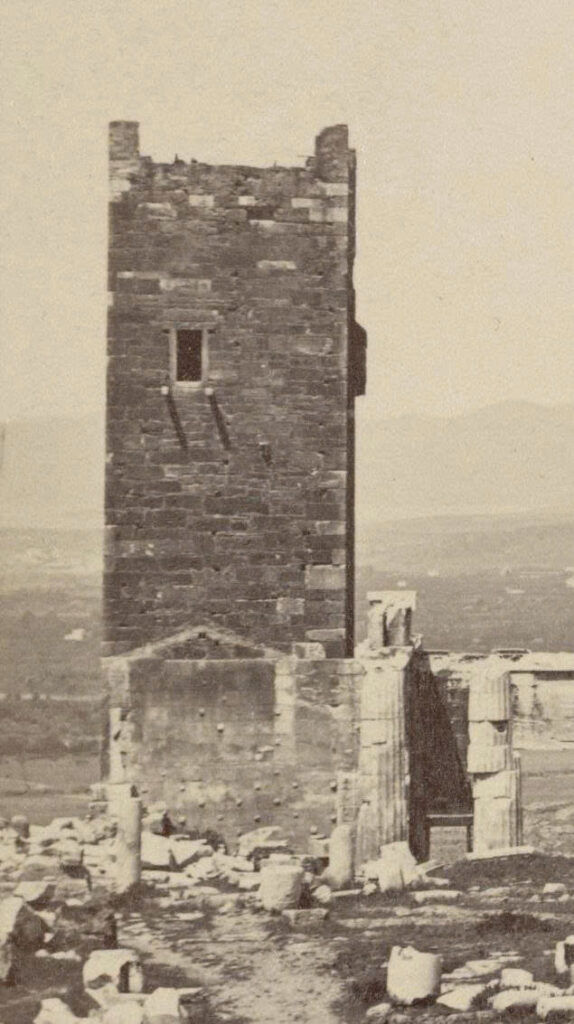The Frankish Tower, once standing proudly on the Acropolis of Athens, tells a compelling story of power, transformation, and cultural identity spanning several centuries. This medieval structure, built in the heart of classical antiquity, became a silent witness to the changing tides of history.
The Rise of Frankish Power

Erected in the wake of the Crusades, the Frankish Tower emerged as a bold statement of Western authority on the Acropolis’s southern wing. From its strategic position within the Propylaea, it served dual purposes: a military fortification and an unmistakable symbol of Frankish dominance over the cradle of Greek civilization. The tower’s commanding height offered an expansive view of Athens, effectively demonstrating the new rulers’ control over this ancient city.
A Structure of Many Faces
The Ottoman Transformation

As power shifted to Ottoman hands, so did the tower’s purpose. What began as a military stronghold evolved into a storage facility for valuable salt. However, the structure’s darker history emerged during this period, as it was converted into a prison where captives faced imprisonment and torture, marking a grim chapter in its history.
The Path to Demolition

The 19th century brought sweeping changes as Greek nationalism surged and appreciation for classical heritage reached new heights. In 1874, a decisive moment arrived when authorities chose to dismantle the Frankish Tower. This action was part of a broader initiative to restore the Acropolis to its classical splendor, removing medieval additions that were seen as interruptions to its ancient Greek character.
An Enduring Legacy

Though physically absent from today’s Acropolis, the Frankish Tower’s legacy persists as a testament to Athens’ complex history. Its story reflects the broader narrative of the Acropolis – a monument that has endured numerous transformations under different rulers and cultures. The tower’s journey from construction to demolition mirrors Athens’ own path through centuries of foreign rule, cultural adaptation, and eventual reclamation of its classical heritage.
Historical Significance
The tower’s history remains an integral part of the Acropolis’s rich tapestry, demonstrating how this ancient citadel has continuously adapted to changing times while maintaining its fundamental significance. While visitors today cannot see the physical structure, its story enriches our understanding of the Acropolis as more than just an ancient Greek monument – it is a testament to the enduring nature of one of humanity’s most iconic archaeological sites.

The Frankish Tower’s tale reminds us that the Acropolis is not merely a symbol of ancient Greek achievement, but a living chronicle of Athens’ journey through time, shaped by successive waves of conquest, cultural exchange, and ultimately, revival.

